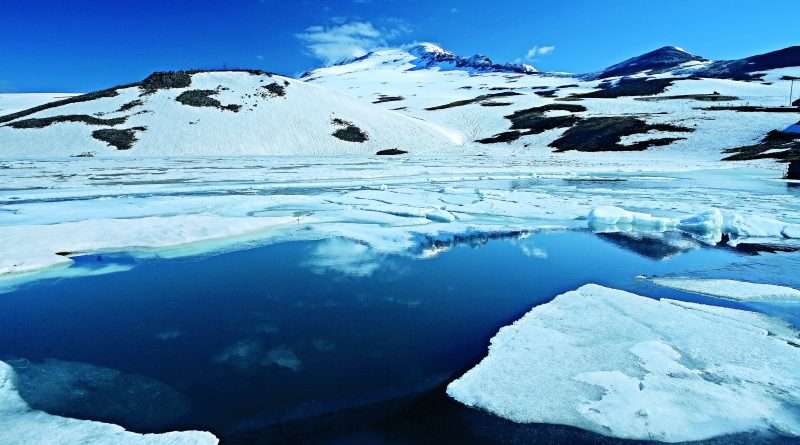Lake Kari
Lake Kari (Armenian: Քարի լիճ, K’ari lich, lit. ‘Rock/Mountain Lake’) is a freshwater gem located on the picturesque slopes of Mount Aragats in Armenia. This lake is positioned at a soaring 3,185 meters above sea level; this lake is renowned for its stunning natural beauty and significant historical background.
Geography and Physical Characteristics
Lake Kari exhibits typical glacial characteristics, enclosed within a U-shaped valley and surrounded by moraines. The lake spans a surface area of 0.12 km² with a perimeter of 1,150 meters and reaches a maximum depth of 9 meters. The lake’s water is limpid, cold, and mainly sourced from precipitation, remaining frozen for a significant part of the year (8–9 months).
Historical Significance
Dating back to the pre-Urartian period, a theory suggests that Lake Kari was initially a man-made reservoir utilized for irrigation. In the 17th century, an extensive transformation was initiated by Catholicos Pilippos I, diverting the lake’s outflow from the Geghadzor River to the Amberd River, a tributary of the Kasagh. This man-made canal, however, has since vanished. In 1963, the gegharkuni strain of the Sevan trout was introduced into the lake, and while it did not multiply, it exhibited a faster growth rate than its counterparts in Lake Sevan.
Flora, Fauna, and Climate
The climate at Lake Kari is subject to variation, influenced heavily by its altitude. The area is abundant in vegetation and houses a diverse array of animal species, contributing to the region’s rich biodiversity.
Access and Infrastructure
Lake Kari is accessible via roads from the south in the village of Agarak and from the east near the Armenian alphabet monument, although these roads are often closed during the winter months. Adjacent to the lake, a cosmic ray station established in 1943 by physicists Abraham and Artem Alikhanyan stands as a testament to the scientific interest the area has garnered.
Cultural and Scientific Importance
The lake holds a cherished place in local folklore and is a significant point for scientific research, particularly in cosmic ray study. The surrounding Mount Aragats and its peaks contribute to the mystical aura of the lake, embedding it deeply in the cultural and natural heritage of Armenia.

